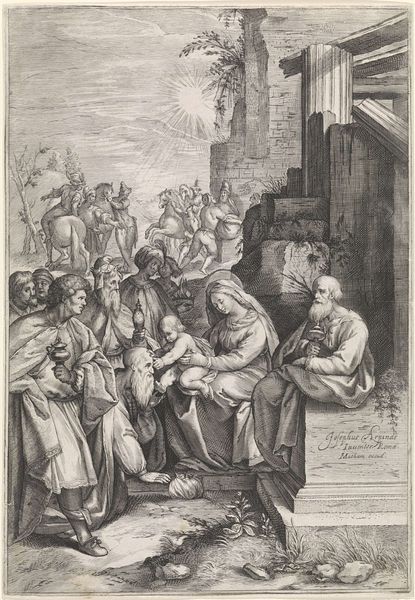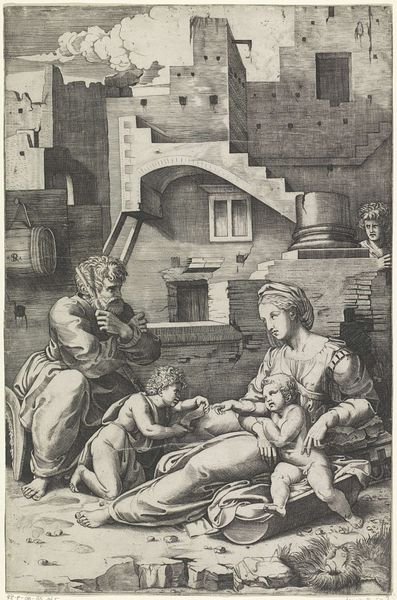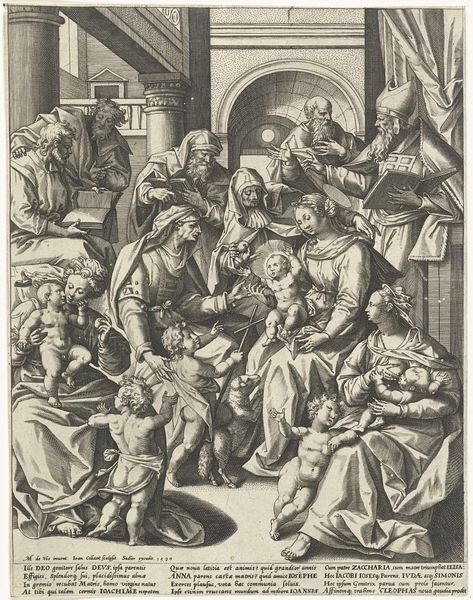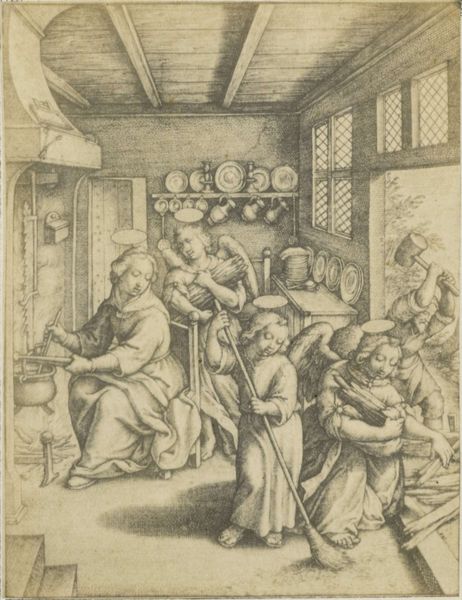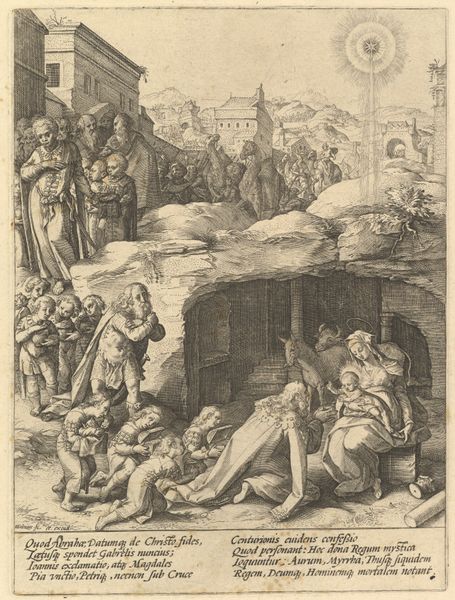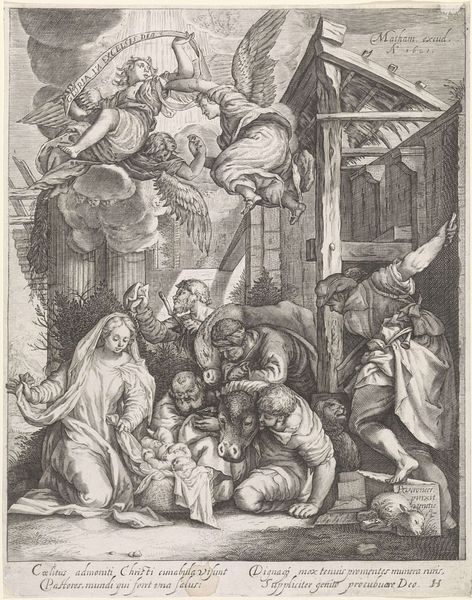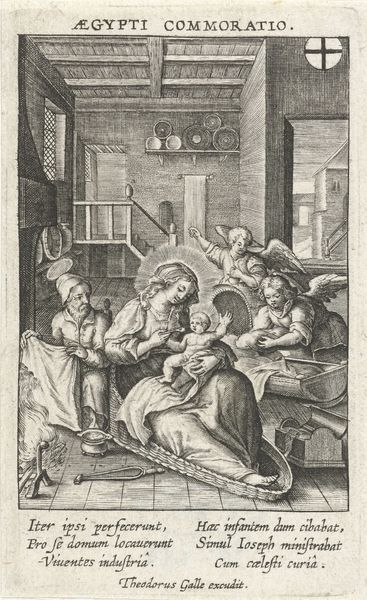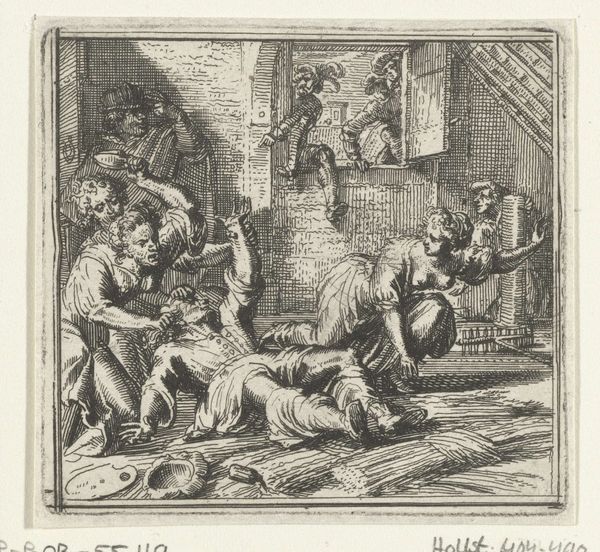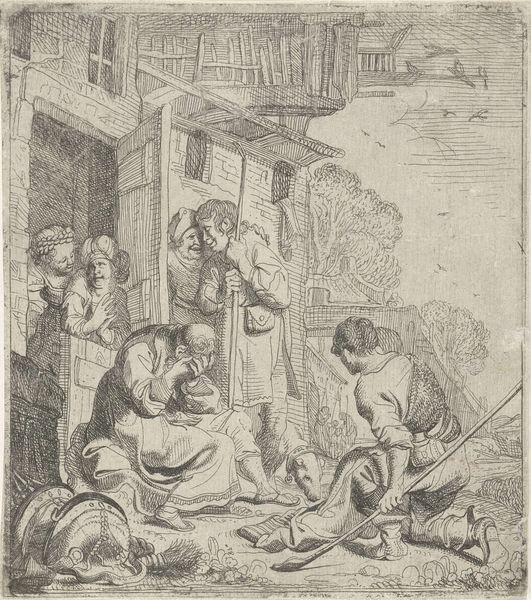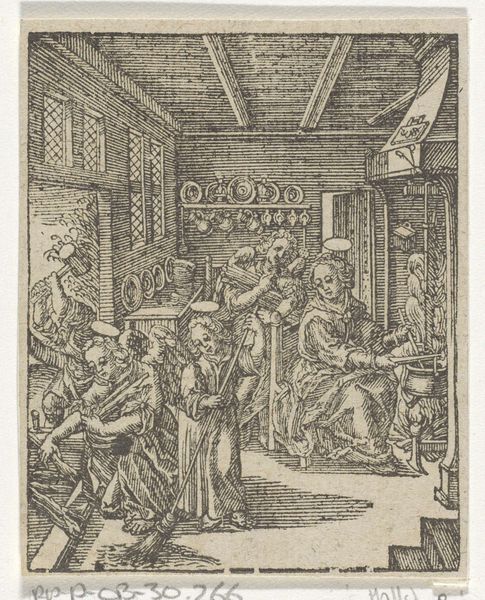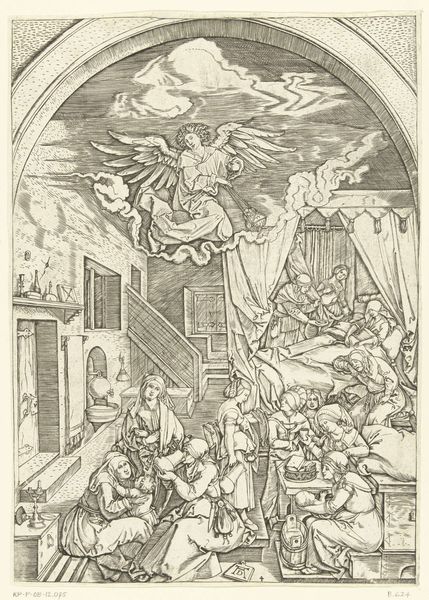
print, engraving
#
portrait
# print
#
figuration
#
history-painting
#
northern-renaissance
#
engraving
Dimensions: height 198 mm, width 135 mm
Copyright: Rijks Museum: Open Domain
This engraving, *Holy Family in Egypt*, was created by Pieter Jalhea Furnius around 1590. It offers a glimpse into the world of the late 16th century, a period marked by religious and political upheaval. The image presents the Holy Family not in a distant, idealized setting, but within a domestic interior filled with everyday objects. Mary is depicted feeding the infant Jesus, watched over by Joseph and several angels. Yet, the presence of a woman sweeping on an elevated platform suggests class distinctions that permeated society at the time. The decision to set this scene in a contemporary domestic setting speaks volumes. It collapses the distance between the divine and the mundane, inviting viewers to see the Holy Family as figures with whom they could identify. This humanization of religious icons challenges the traditional, hierarchical representations of the time, forging a more intimate and relatable connection between the viewer and the sacred narrative. The artist seems to ask us to consider, what does it mean to find sanctuary, to nurture, and to protect in a world fraught with uncertainty?
Comments
No comments
Be the first to comment and join the conversation on the ultimate creative platform.
